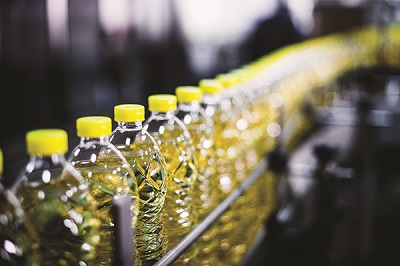Energy efficiency has become a hot topic. There are worldwide initiatives to rein in CO2 emissions and limit climate change. Consumers are becoming critical and demand products that are produced in a sustainable way. Furthermore, many production plants are more aware of the huge cost reductions involved with energy savings. As a result, firms are investing in everything from renewable energy generation and heat-recovery systems to LED lighting and high-efficiency motors, according to Wolfgang Teichmann, the CEO of KTW Technology based in Wehr, Germany.

Unfortunately, one large savings opportunity that is often overlooked involves compressed air — an industrial utility that even today is often considered as “free.” In reality, said Teichmann, it is one of the most expensive utilities with a cost up to ten times higher than that for electricity. Despite the high cost, compressed air is used extensively to operate equipment as well as to cool, dry and clean. In fact, around 70% of all compressed air is used in blow-off and similar applications.
Various technologies and techniques have been applied in an attempt to reduce the cost of applying compressed air, he continued. One old technique is simply to reduce the pressure of compressed air at the point of use — in particular for blow-off applications — with an open tube or pipe, or drilled lengths of pipe. Every 10 psig reduction in compressed air pressure can save 5% energy use. The problem is, exiting compressed air, being turbulent, can be quite noisy and loses a great deal of energy from turbulence, making applications less effective.
There has been some movement toward the use of blowers to lower energy consumption, but they are still limited due to reasons like loud noise, lack of adequate space (too large a footprint), high maintenance costs and, sometimes, supplying inadequate energy for drying and cleaning tasks.
To counteract these problems, air amplifying nozzles and air knives were developed to operate at normal compressed air line pressure of 80 to 100 psig. The devices employ aerodynamic shapes so exiting air experiences less pressure drop and noise, and much of the kinetic energy at the target is maintained. In addition, laminar flow lets the exhaust air work over a greater distance. Today there is extensive use of this technology.
Another technique to reduce consumption is to use solenoid valves to pulse the compressed air. The idea behind this is simple: on-off pulsing would reduce the overall amount of compressed air, theoretically up to 50%, because air is only used half the time.
One nice advantage of pulsing is that as the air turns on the airline momentarily builds up a pressure that on initial release provide a slight “kick.” However, cycling the air produces a “jerking” action with instantaneous higher-than-normal flow and faster-than-normal velocity working against an inside back pressure that also increases. This causes a pressure loss at the outlet if the airline is not upsized. As a result, air savings rarely end up anywhere close to 50%.
Also, if an amplifying nozzle is added, the pulsing would most likely stop the solenoid valve from working as the hole size of any air outlet has to be large enough to avoid pressure back on the solenoid. In addition to these issues there are added costs and downtime, one basic problem with all solenoids.
In the past few years some valves have been developed which are basically modified solenoids and are promoted for pulsing to save on the use of compressed air. They also claim almost 50% energy savings. However, these units face the same reliability problems, as both solenoids and valves operate linearly and are highly sensitive to back-pressure in the airline between valve and air outlet. There is no doubt that pulsing save energy if properly installed. But either the savings are much less than 50% (perhaps around 25% on average) or the outlet force drops too low to be practical for most installations, as users must install the pulse-generating valve very close to where the air is needed.
The other issue with pulsing systems is the frequency. These systems are limited to about 15 Hz and extremely fast-moving production lines cannot be adequately cleaned or dried if parts are missed because the pulsing is too slow.
A recently developed pulsing process valve, KTW’s SmartValve addresses all of the above limitations. It has an extremely low maintenance design, is less sensitive to back pressure, operates at low or high frequencies, amplifies pulse output forces and can reduce compressed air consumption by 60 to 90%.
When tested against other pulse systems, pulse forces are amplified significantly — which means better scrubbing and cleaning action, or faster drying. Likewise, the new SmartValve can match the energy costs of a blower without the noise, high maintenance requirements, added space, and high capital cost. This pulse system can also be combined with complementary air-amplifying nozzles and air knives. Together, the system can lower compressed air and energy consumption; reduce noise, downtime and maintenance; and improve overall process effectiveness.
KTW Technology
ktwsystems.com
Filed Under: Pneumatic Tips